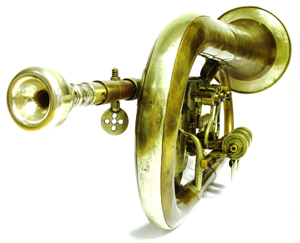Bare cheek: I REMEMBER…

Mile Oak – these days it’s a thriving community with its own college, library, football team, and futuristic observatory, but what was it like way back when? 102 year-old resident Cranston Bellweather remembers…
Now, prior to 1911 of course there was nothing beyond Portslade; I don’t mean there was just countryside, or wasteland, or anything like that, I mean there was literally nothing there, just a sort of formless void, a white expanse of space. It was dangerous too; sometimes someone would get drunk and wander into it, and they’d never be heard from again. Except sometimes, on long winter nights, you’d hear them crying. Brrr – fair gives me the collywobbles to think about it, it does.
Anyway, in 1911 the local authorities decided that having a formless, boiling void around wasn’t a great advert for the area, so they had some ground and sky and things like that put in. One of the things they had put in was the famous Mile Oak Oak, from which the community gets its name. As its name suggests, the Mile Oak Oak was a mile high, making it the tallest tree in the universe. It was so tall that it was said you could see it from Italy, though I was in Italy after the war and I couldn’t see it so maybe that’s a lot of cobblers. Interestingly, it’s this tree that introduced the concept of the “Mile High Club” as back in the the ‘20s it became common for courting couples to climb up to its highest branches to do the business as it were.
In the early days of course, Mile Oak was mainly fields, with the odd dwelling, but in the ‘60s there was an increase in population so the authorities decided to build some proper housing. With the new houses came a new prosperity and an influx of new inhabitants; famous people who moved to Mile Oak in the 1970s and ‘80s included J. Paul Getty, Liza Minelli, Martin Scorsese, Andy Warhol, Joe Bugner, Reg Varney, Rusty Lee, Keith Floyd and so on. It was also about this time that it got taken over by the Yakuza, the notorious Japanese gangster organisation, who ran their operations from a small two-bedroom house on Hawthorn Way. They were known for their unstinting brutality, and their leader, one Fujimoto Masaki was particularly known for his dislike of having the honour of his family besmirched in any way, so I was a bit worried when he returned from work one day to find I’d broken into his house and was trying on his wife’s underwear!
Musical instruments of yore
The local museum’s been having a bit of a clear-out lately. Among the many interesting items the staff discovered deep in storage (where, for reasons yet unfathomable, all the best objects are kept), was a large collection of obsolete musical instruments…

The Trouser Snake – A distant cousin of the Serpent, in that it was a woodwind instrument with a cup mouthpiece, this instrument coiled round the leg and was popular with the small bands that typically played in country churches until the 1850s, when it was condemned in a sermon for profanity. Weber wrote for four such intruments in his Covent Garden fairy tale opera Oberon, but nowadays the parts are usually given to sandblaster.
The Dulcichord – In 1736, colourful instrument-maker Antonio Burgassi, seeing a gap in the market between the clavichord, harpsichord and clavinet, produced this proto forte-piano. The mechanisim involved neither plucking nor striking the strings, but goading them with sarcastic derision. This produced a sweet tone that Dr. Burney parised for its “rare delicacy and incomparable felicity.” Unfortunately this method of sound production proved unreliable and the instrument was notoriously difficult to keep in tune.
The Lanky Lucy – This 9’ tall Ottoman percussion instrument certainly looked impressive, bestrewn as it was with great tassles and medallions and covered with a canopy topped with a scimitar, and it was possibly for this reason that Beethoven included one in his opportunistic pot-boiler ‘Wellington’s Victory’. These days the part is generally omitted, as, so far as musicologists can tell, the Lanky Lucy was useless.
The Five-Valve Trumpet – Possibly the most complicated piece of plumbing since the Queen Mary, this convoluted construction, comprising more than 180’ of tubing, enabled the great Sir Harry Mortimer at the 1956 Brass Championships to play “Carnival of Venice” in 12.5624 seconds, breaking Donald Campbell’s land speed record.
In & Out
In
• Braising steak
• His ’n’ Hers towels
• The Seven Pillars of Wisdom
• Undermining chidren’s confidence
• Putrifaction
Out
• Le Crunch
• Laurens Van Der Post
• ‘What’s the definition of…?’ jokes
• Lapis Lazuli
• Bobbies
Follow me: @MitchellnNixon




















